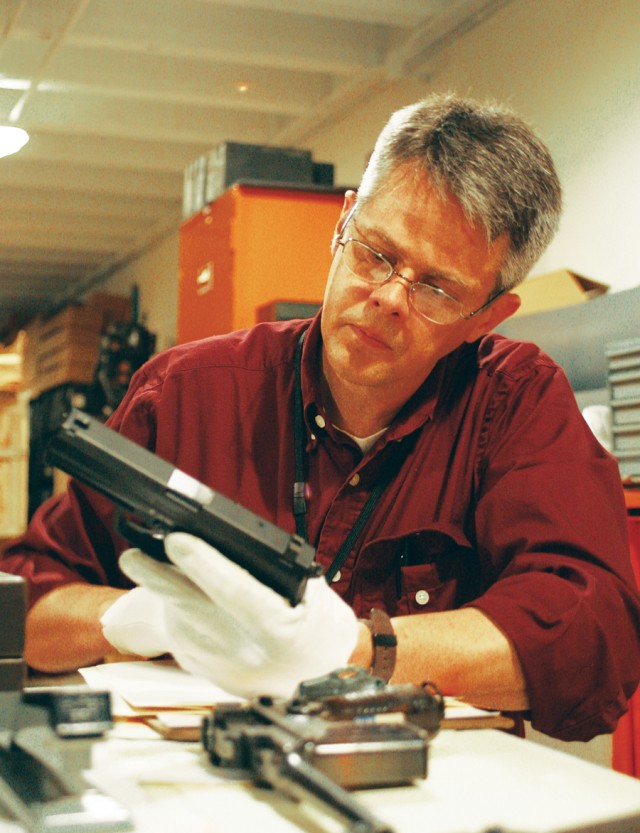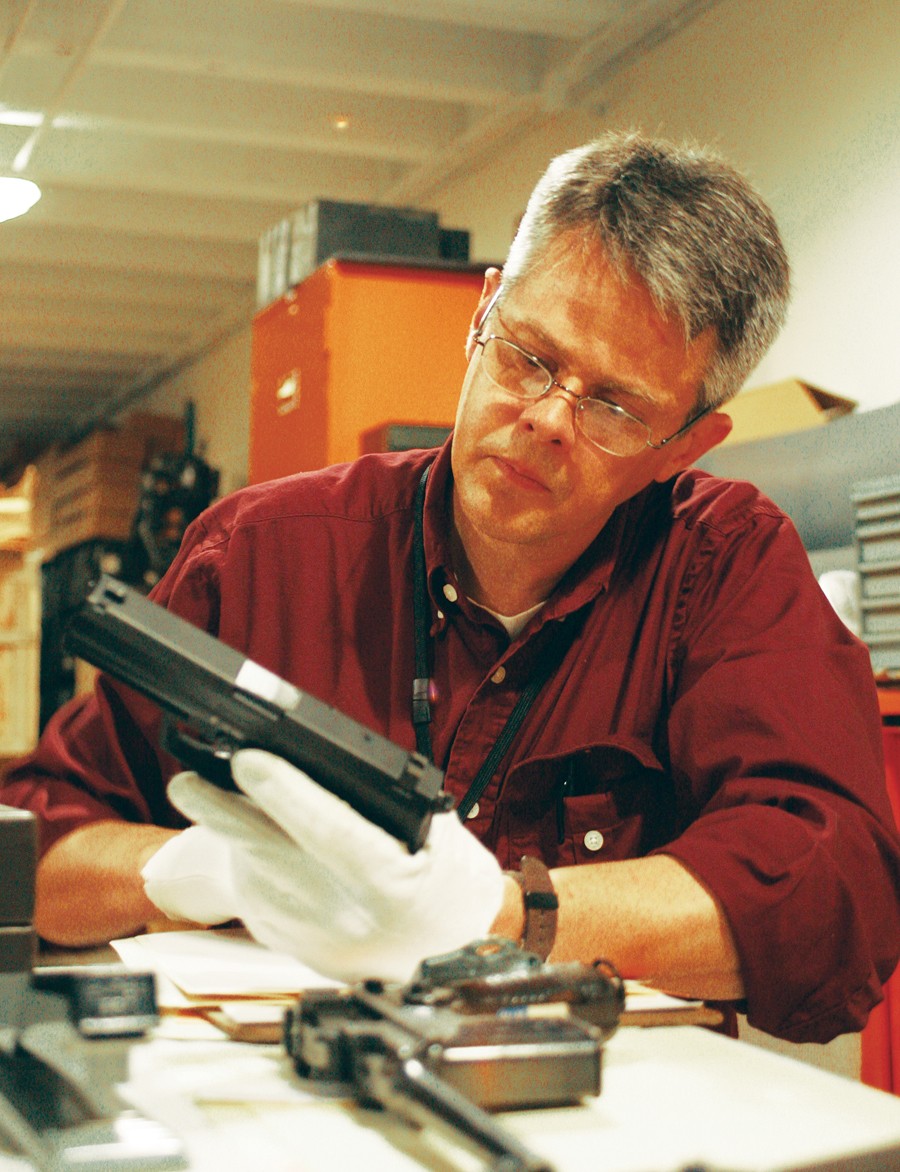
With 48 days left until the opening of the National Infantry Museum, curator Mike Criscillis and his team are continuing to catalog, pack and identify items that will either be displayed or stored in their new location just outside the access control point on Fort Benning Boulevard.
Criscillis said the location of the new museum is a big advantage to patrons who want to learn about the Army's history, and with the current economy, is a great bargain.
People won't have to go through all the access control points in order to visit the museum, he said.
"I think the museum will enhance (visitors') awareness of the Army and Georgia. I think it is really going to help everyone even though we are living in hard economic times - and it's free. I just think it is great all around - it's really an exciting time for us."
With more than 1,800 artifacts already at the new museum, Criscillis said about 2,300 artifacts, about one-tenth of the museum's collection, would be on exhibit when the move is completed.
"We probably have close to 90,000 artifacts," he said. "About 4,000 square feet of books, 1,000 square feet of artwork and tons of photos from World War II back."
Criscillis said he has a "small cell" in the new museum already to watch over the Army's artifacts on loan to the National Infantry Museum and expects to have a couple more employees there in May.
"The artifacts are owned by the Army and the U.S. Army Center of Military History in Washington," he said. "We are just the caretakers of them."
Assisting the museum staff in the care and movement of artifacts are teams from the U.S. Army Heritage and Education Center, Carlisle, Pa.
Kaleb Dissinger, a curator of uniforms and equipment, is one of the people helping with the move.
"We're here to help with cleaning and pulling the artifacts, keep up with documentation, packaging and hand-receipting items. When it is all done, our entire curatorial staff will have helped in the process."
The more than 1,830 weapons require extra care because of the potentially damaging effects of environmental elements said Jeff Reed, National Infantry Museum arms curator.
With the opening of the new museum on the horizon, Criscillis and his crew are continuing their journey of moving some of the Army's most historical and oldest artifacts to its new home. But, when the final artifact is in place, Criscillis said it is the unsung heroes that will deserve the credit.
"I encourage everyone to remember there has been a lot of people putting their heart, sweat and tears behind the scenes to make this happen - the unsung heroes. I am glad to be just a small part of it."

Social Sharing